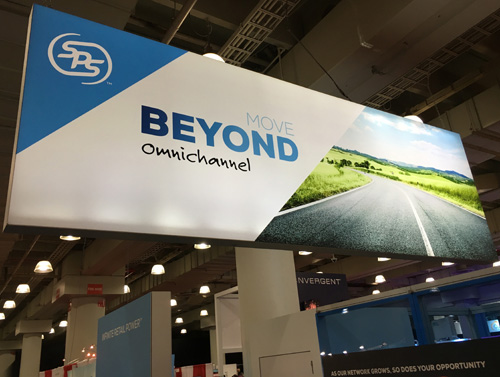Thinking Big About Retail's Future
Note: Originally published in the March 2017 edition of CGT sister publication Shopper Marketing
Oh, so now you want to measure in-store behavior?
A holiday season in which online-sales growth again convincingly outpaced brick-and-mortar increases – while store traffic fell by double digits – has kept discussions about the future of traditional retail hot and heavy so far in 2017.
But the future existence of physical stores didn’t seem to be up for any debate at all in January at the National Retail Federation’s “Big Show.” A noteworthy portion of the 600-odd exhibitors at the annual event, held in New York’s Jacob K. Javits Convention Center, showcased a variety of shopper data-collecting technologies.
Granted, many of these vendors were promising behavioral understanding as a secondary benefit of whatever primary technology they offer: promotion-delivery tools, at-shelf pricing networks, digital signage, personnel improvement tools, even store lighting systems.
Regardless, there are more options for tracking shopper movement and activity available today than ever before. And that, you’ve got to admit, is a little ironic considering the current state of the industry. You could even call it a classic case of closing the stable door after the horse has bolted. But that would be the cynical view, and I’ve never been mistaken for a cynic (since it’s always been obvious to everyone that I am).
The more optimistic viewpoint would be that these new methods of understanding behavior are coming at the optimal time, when the need to modify the store experience to satisfy shopper needs beyond product and price have become critical to success. And when retailers (and consumer product manufacturers) may finally be ready to adopt them at scale.
I say “finally” because, well, you know. Plainly speaking, the need to track and understand shopper behavior has been pretty important for quite some time now. (It’s why the Institute was so bullish about prospects for the ambitious “Pioneering Research for an In-Store Metric” project a decade ago.) But for most retailers, the readiness to invest in the necessary infrastructure has never really been there – the spirit was willing but the pocketbook was weak, if you will.
It’s pretty safe to say that circumstances are different now. Understanding shopper behavior is no longer a competitive strategy for improving business performance. For a number of retailers (and at least a few product manufacturers), it’s now a mandatory strategy for saving the business. There really shouldn’t be a choice anymore – although, as one EnsembleIQ editor noted at the show, despite the plethora of technologies on display, implementation case studies weren’t exactly in equal abundance.
But there’s no need to be cynical when so many opportunities are now available. In fact, one of the biggest potential causes of retail cynicism actually inspired a lot of optimism: The new Amazon Go store was the hottest topic at the show, referenced as an example both of the ongoing need for brick-and-mortar locations and as a sign that shopper-centric technologies will soon transform the traditional store experience.
So, yes, we should measure in-store behavior now.
Unified We Stand
Among other hot topics at the Big Show was “unified commerce,” which looks to be the odds-on favorite to replace “omnichannel” as the retail industry’s latest catchphrase.

When you scratch at the definition, unified commerce kind of sounds like a smarter, more streamlined version of omnichannel rather than a uniquely new retail strategy. But it does have one definite advantage: It helps move the industry further away from its historic focus on distinct sales channels and closer to the goal of creating a seamless experience centered on the shopper.
And while we’re talking about unified activity, I probably should mention that another common talking point at the show had a decidedly less hopeful spin: Several vendors practically led the pitches for their in-store technologies by touting the potential for retailers to monetize the resultant data by selling it to their product manufacturer partners.
I get the idea. We’ve already noted that costs have always been the greatest obstacle to the adoption of in-store technology, so presenting retailers with methods for recouping their expenses can certainly smooth the sell-in process. But is it too idealistic to suggest that the primary benefit should be the growth in sales and loyal shoppers that will result from an improved, data-driven store experience?
I hope not, because I’d hate to be cynical about the future of retail.


